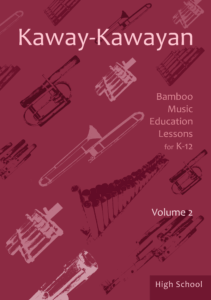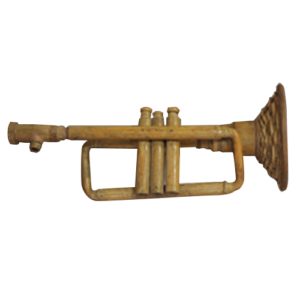Highschool Module
PAMULINAWEN REHEARSAL PLAN
Background
Description: Ilokano Folk Song
Composer: Unknown Lyricist: Jose A. Bragado
Arranger: Genaro Cesar Edilo Jr., November 2015

Lyrics
Pamulinawen, puso indengam man Toy umasasug agrayo ita sadiam.
Panunotem man ta dika paguintutulungan Toy agayat, agruknoy ita emman.
Essem mot’ diak kalipatan Ken nasudi unay a nagan,
Ta uray sadin ti yan, Disso sadino man, Aw-awagak a di agsarday,
Ta nagan mo nga kasamitan.
No malaquip ka, pusok ti mabang-aran.
Adu nga sabsabong, adu nga rosrosas Ti addat ditoy, Nena nga mabuybuya,
Ngem awan manlaeng ti sabali nga liwliwak No di dayta sudim ken imnas.
Aywen, biagko, indengam man.
Iyasasokko nga inaldaw
Ta diak to a kayat ti sabali nga imnas Sika laeng, o, biagko, ita ken uray tanemman
No malagipka, pusok ti mabang-aran.
Dakay nga ububbing, didakam’ tultuladen Ta dakkel kamin nga agiinnarem
Ta ituloyyo ta panagadalyo Tapno inkay magun-od kakaligumanyo.
Essem nga diak malipatan, ta nasudi unay a nagan, Uray sadin ti ayan, lugar sadino man,
Aw-awagan di agsarday ta naganmo kasam-itan.
No malagipka, pusok ti mabang-aran.
The “Pamulinawen” Ilocano folk song is originally written by Jose A. Bragado, a writer and a poet who was born at Santa, Ilocos Sur. It is about pursuing a girl, named Pamulinawen, with a stone heart, who ignores her suitor’s pleading. “Pamulinawen” narrates a song about affection and politeness. The lover begs for his affection to be acknowledged in this lighthearted, respectful song, but focuses more on the joy of his beloved’s thoughts.
“Pamulinawen” is translated as an alabaster, an extremely hard stone that represents the woman’s rejection of her lover’s respectful gestures. It also symbolizes a girl whom a man loved the most, a very good example of women during this period; soft, gentle, and modest. Lastly, “Pamulinawen” is compared to the bouquets and roses with an admirable beauty.
In the song, there was also some kind or even fatherly guidance, which reminded the youth about responsibilities and priorities in one’s life. The song is persuading the listeners that there is a right moment for everything. For example, in courting someone, it is important to take things slowly and to wait instead of being in a hurry in answering “yes” or pressuring someone to acknowledge one’s love.
A. MATERIALS 
Audio tracks – Scan QR code on the right
Sheet music – Pamulinawen arrangement by Genaro Cesar Edilo Jr.
B. GUIDE TO THE PIECE
There are three sections in the arrangement. The key is in C major and the time signature is 2/4. The tempo is moderately fast. The introduction consists of 9 measures before going to section A. The first 7 measures are played by the marimba/gabbang that is repeatedly playing a 2 measure pattern. The angklung plays the accompaniment on the 2nd measure and bumbong plays on the 4th measure. On the 8th measure, the guitar and bumbong play an onset rhythm for the piece.
In section A, measures 10–25, the angklung plays the melody while the gabbang/ marimba plays the accompaniment in tremolo. The guitar (rhythm) plays a 2-measure repeated strumming pattern while the bumbong plays the bass part.
In section B, measures 26–37, the melody is played by the gabbang, the marimba also plays the melody but there are some parts where it plays a harmony note. The angklung plays the accompaniment. There’s a change in the bumbong rhythmic pattern while the guitar continuously plays the same rhythmic pattern.
For section C, measures 38–47, feature the alternation of melody between instruments of the gabbang/marimba and angklung. The gabbang plays the main theme, and the marimba plays the second voice. Then, the melody shifts to the angklung. This alternation happens on every line [of the folk] (every 2-measures).
Building up the ending begins in measure 48. There is a ‘ritardando’ mark in measure 51 which means the music will gradually decrease speed. The piece concludes with the Pamulinawen tune on the last 2 measures of the piece played by the marimba and ends with a C chord on the marimba, gabbang, and guitar.
| Time Allotment | Material | Instrument | Measures | Objective | Activity | Assessment |
| 10
minutes |
ALL | Develop proper organization skills.
Prepares the player for the rehearsal proper. |
Pre-rehearsal activities.
Prepare materials such as music sheets, mallets, and plectrum. |
Check for instrument condition and completeness. | ||
| angklung,
gabbang, and marimba |
Tune the instrument for guitar (frequency of A=440 khz). |
|||||
| bumbong | Do warm-ups. | |||||
|
guitar |
Play the scales (in staccato and legato) | |||||
| Do some lip vibration. | ||||||
| Assign notes for angklung and bumbong players. | ||||||
| Practice the I, IV, and V chords. | ||||||
| 5 minutes | Pamulinawen | As a group | Identify the elements used in the piece.
Develop ear training |
Listen to the MP3/MIDI of the piece.
Analyze and read the piece.
Teacher explains the piece. |
Members should assess their musical knowledge by following the music while looking at the notation of their part. |
| Time Allotment | Material | Instrument | Measures | Objective | Activity | Assessment |
| 20 | guitar and | Intro, | Develop sight | Clap the | The teacher | |
| minutes | bumbong | Section A | reading skills. | rhythmic | corrects how the | |
| to C | patterns. | players execute | ||||
| (m. 1–54) | Play properly
rhythmic patterns. |
Play the parts individually. | their parts.
Guitar players |
|||
| should be able | ||||||
| Sing the notes. | to play the chord | |||||
| progression | ||||||
| [Note: You might | and strumming | |||||
| begin by playing | pattern | |||||
| the section | accurately. | |||||
| slowly at first | ||||||
| until the players | Bumbong players | |||||
| become familiar | should be able to | |||||
| with the notes.] | produce a good
resonant sound. |
|||||
| 10 | gabbang/ | Intro, | Marimba players | |||
| minutes | marimba | Sections | should be able | |||
| A & B | to execute the | |||||
| (m. 1–37) | proper playing | |||||
| technique | ||||||
| (tremolo, | ||||||
| staccato, legato). | ||||||
| 20–30
minutes |
angklung | Individually, angklung players | ||||
| should execute | ||||||
| fine tremolo in | ||||||
| their instruments. | ||||||
| As a team, | ||||||
| they should be | ||||||
| able to produce | ||||||
| flowing sound | ||||||
| as they play the | ||||||
| melody of the | ||||||
| arrangement. | ||||||
| 20–30 | gabbang, | Section C | The players | |||
| minutes | marimba, | to ending | should be | |||
| and | (m. 38–54) | able to play | ||||
| angklung | the alternation | |||||
| Practice | between the | |||||
| together | melody and | |||||
| for the | accompaniment | |||||
| alternation
of melody. |
properly. | |||||
| 5 minutes | ALL | Ending (m. 48–54) | Execute the rallentando on m. 53. | The players must be able to play the notes | The players should be able to play their parts | |
| with the correct | correctly and | |||||
| rhythm. | produce good | |||||
| harmony. | ||||||
| The players | ||||||
| must follow the | The teacher | |||||
| teacher’s cue for | should provide | |||||
| the rallentando | immediate | |||||
| and ending part. | correction, if
necessary. |
|||||
| 10
minutes |
BREAK | |||||
| Time Allotment | Material | Instrument | Measures | Objective | Activity | Assessment |
| 20–30
minutes |
ALL | Entire piece | Develop attentiveness to the conductor.
Play the entire piece while observing the appropriate tempo, rhythm, and dynamics. |
Ensemble playing | The teacher makes sure that there is balance as the ensemble plays.
Provide immediate correction, if necessary. |
|
| 10
minutes |
ALL | Practice self and group evaluation. | Post-rehearsal evaluation. | The teacher provides feedback and suggestions about the group’s performance.
Members can also evaluate and assess their performance. |
Science in a creative industry.
The DOST-FPRDI has a Bamboo Musical Instruments Innovation R&D program aimed at improving the quality of locally-made bamboo musical instruments (BMIs) through science and innovative technologies. The program seeks to standardize the production of selected BMIs, develop prototype designs, analyze raw material sources and existing markets, and build a BMI processing facility. In addition, the program aims to document the ethnocultural story behind several BMIs and identify the bamboo species used in BMI production to promote public awareness and appreciation of the cultural importance of these musical instruments. The program is a collaboration with the University of the Philippines and Philippine Normal University for teaching modules and analyzing sound quality and standardization of BMI design. The DOST Grants-in-Aid program provides funding.
PhBMI








